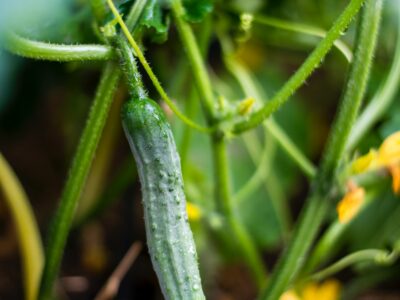There is a unique joy in growing your own food and witnessing the transformation from tiny seeds to flourishing plants. Backyard gardening allows individuals to reconnect with nature, embrace self-sufficiency, and enjoy the abundant rewards of harvesting fresh, homegrown produce. In this article, we will delve into the art of harvesting food from your backyard garden, exploring the benefits, techniques, and the immense satisfaction that comes with bringing the fruits of your labor to the table.
The Benefits of Backyard Harvesting
Harvesting food from your backyard garden offers a multitude of benefits that extend beyond the dinner table. Firstly, it promotes self-sustainability by reducing reliance on grocery stores and industrial agriculture. By growing your own food, you have control over the quality of produce, ensuring it is free from harmful pesticides and genetically modified organisms.
Additionally, backyard harvesting allows you to experience the freshness and flavor of homegrown fruits and vegetables. There is nothing quite like picking a sun-ripened tomato or plucking a handful of herbs to infuse your culinary creations with vibrant flavors.
Gardening is also a rewarding physical and mental activity. It provides opportunities for exercise, relaxation, and connection with nature. Engaging in the process of planting, nurturing, and ultimately harvesting your garden fosters a sense of accomplishment, pride, and a deeper appreciation for the cycles of life.
Techniques for Successful Harvesting
To make the most of your backyard harvest, it’s essential to employ proper techniques to ensure optimal flavor, nutrition, and longevity of your produce. Here are some key techniques to consider:
Timing
Harvesting at the right time is crucial for peak flavor and nutritional content. Each plant has specific signs to indicate when it is ready for harvest. Pay attention to factors such as color, size, and texture to determine the perfect time to harvest.
Gentle Handling
Treat your harvested produce with care to prevent damage and preserve its quality. Use scissors or pruners for delicate herbs and fruits, and gently remove vegetables from the stem or root systems.
Proper Storage
After harvesting, it’s important to store your produce correctly to prolong its shelf life. Some vegetables thrive in cool, dark environments, while others require refrigeration. Research the specific storage requirements for each crop to maintain freshness.
Successive Planting
Implement successive planting to ensure a continuous harvest throughout the growing season. By staggering your planting schedule, you can enjoy a steady supply of fresh produce rather than an overwhelming abundance all at once.
Preservation Methods
If you find yourself with a surplus of harvested produce, explore preservation techniques such as canning, freezing, or dehydrating. These methods allow you to enjoy the flavors of your garden long after the growing season ends.
The Satisfaction of Homegrown Harvest
There is a unique sense of satisfaction that comes from harvesting food from your own backyard garden. As you witness the fruits of your labor, you develop a deeper appreciation for the process and the interconnectedness of nature. The taste of a perfectly ripe tomato or the aroma of freshly picked herbs serves as a reminder of the care and effort you put into nurturing your plants.
Beyond the tangible rewards, backyard harvesting fosters a connection to the seasons, as you observe the cyclical nature of growth and renewal. It teaches patience, perseverance, and the importance of working in harmony with the natural world.
Additionally, harvesting your own food encourages creativity in the kitchen. The flavors and varieties of homegrown produce inspire culinary experimentation, allowing you to create nourishing meals that reflect your personal tastes and preferences.
Harvesting food from your backyard garden is a gratifying experience that connects you with the earth, promotes self-sufficiency, and rewards you with flavorsome and nutritious produce. It empowers individuals to take control of their food supply, enjoy the freshness of homegrown ingredients, and develop a deeper understanding of the natural world. Whether you have a small patio garden or a sprawling backyard plot, the act of harvesting your own food is a journey filled with joy, satisfaction, and a profound appreciation for the beauty and abundance that nature provides. So, roll up your sleeves, step into the garden, and savor the fruits of your labor!
Enjoy this article?
Check out my course on permaculture!
A Comprehensive Guide on How to Start a Permaculture Garden
Introduction to Permaculture Ethics We begin by exploring the core ethics and principles of permaculture, which include Earth care, people care, and fair share. You can create a garden that nourishes both the land and its inhabitants, while leaving a positive impact for future generations. Designing the Permaculture Garden Designing a permaculture garden involves creating …



 Empowering Education and Nurturing Growth
Empowering Education and Nurturing Growth
Leave a Reply